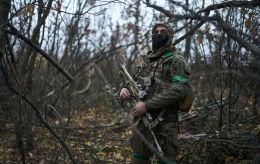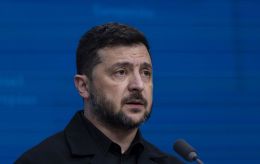Russian attacks surge since Trump's inauguration, says ISW
 Photo: Russia's attacks on Ukraine have become more widespread after Trump's inauguration (defence.ua)
Photo: Russia's attacks on Ukraine have become more widespread after Trump's inauguration (defence.ua)
Since the beginning of 2025, Russia's attacks on Ukraine have significantly increased, particularly after the inauguration of US President Donald Trump. The peak of the strikes' intensity occurred in February, according to a report from the Institute for the Study of War (ISW).
According to the Institute for the Study of War (ISW), after Donald Trump's inauguration, Russia's attacks on Ukraine have become more widespread.
A significant increase in the number of strikes was noted, especially following the phone call between US President Donald Trump and Russian dictator Vladimir Putin on February 2, when the intensity of the attacks remained high.
Another surge in activity was recorded at the end of February following talks between the US and Russia in Saudi Arabia, which led to targeted attacks on Ukrainian territory.
On March 6-7, Russian forces launched one of the largest missile and drone strikes on Ukraine. According to Ukrainian military sources, 67 missiles and 194 Shahed drones were launched, with 100 drones and several missiles being destroyed by Ukrainian air defense forces.
Analysts estimate that the increase in drone usage in these attacks is a response to the improvement of Ukrainian radio-electronic warfare technologies.
During these attacks, energy infrastructure was damaged in several regions of Ukraine, including Odesa, Poltava, Chernihiv, and Ternopil. The strike on critical infrastructure led to fires and other significant damage.
Escalating attacks
The growing scale of attacks is linked to the gradual increase in the production and use of Shahed drones and other unmanned systems, which allows Russia to adapt to Ukraine's successful countermeasures in the field of air defense.
However, experts note that this tactic could significantly increase the vulnerability of Ukraine's air defense systems due to the depletion of Patriot interceptor stocks, as new weapons supplies from the US have currently been paused.
Furthermore, Russia continues to intensify its offensive operations in specific regions, particularly towards Kupiansk and Chasiv Yar. It is likely that Russia plans to take advantage of the pause in US military aid to strengthen its operations on the front, including an assault on strategically important cities in eastern Ukraine.
These changes in tactics and the increased intensity of attacks indicate Russia's intent to achieve significant operational results on the front before the resumption of Western support becomes critically important for Ukraine.
Russian missile attacks
It is worth noting that Russian forces are changing their missile attack tactics, now planning strikes at lower altitudes to increase effectiveness. They are actively using Iskander missiles and KN-23 rockets, and have also resumed using the S-300 system.
Additionally, the occupiers are attempting to exploit the stealthiness of the Su-57 and Kh-69 missiles to carry out unnoticed strikes. An expert pointed out that only one of eight such missiles was intercepted.

